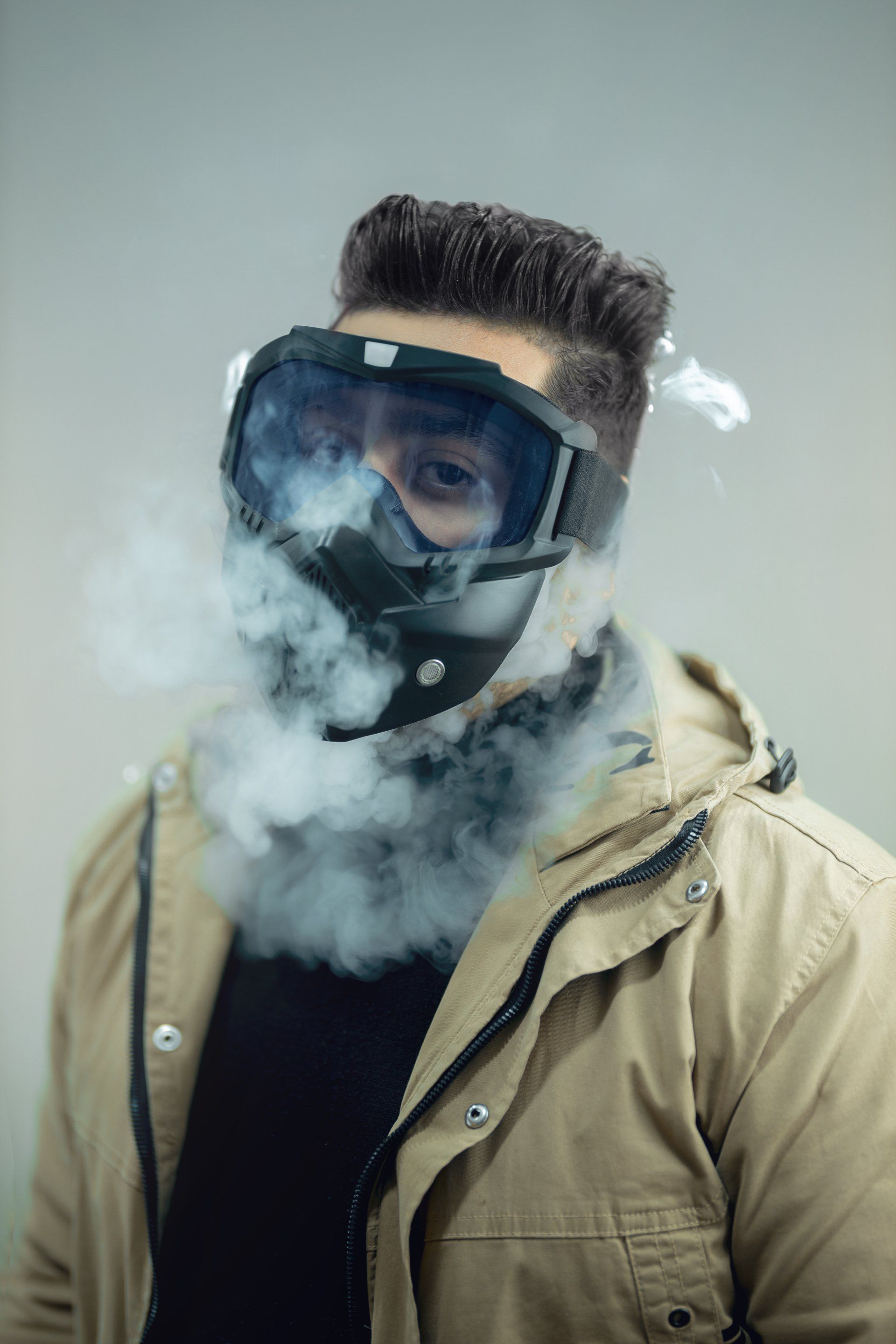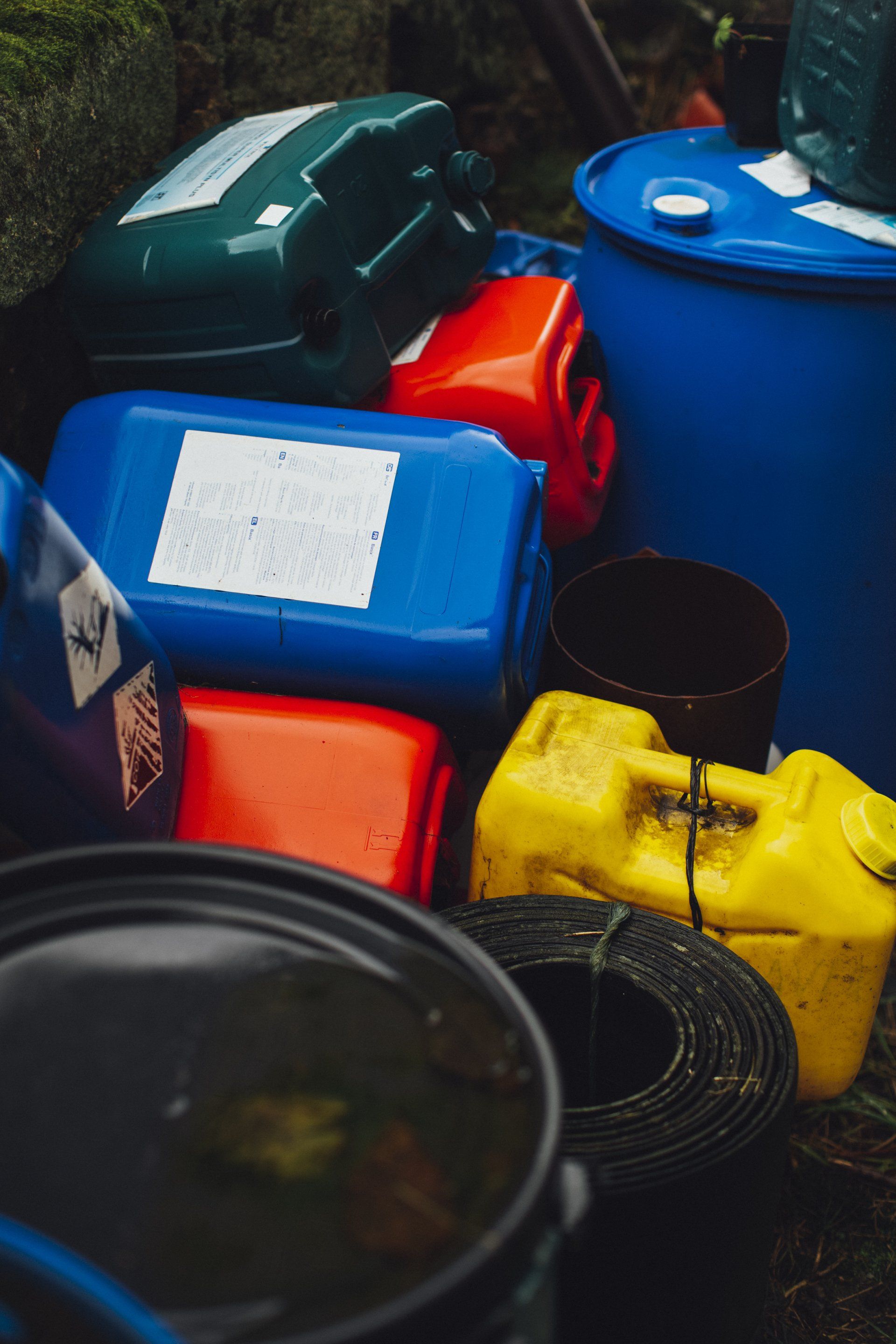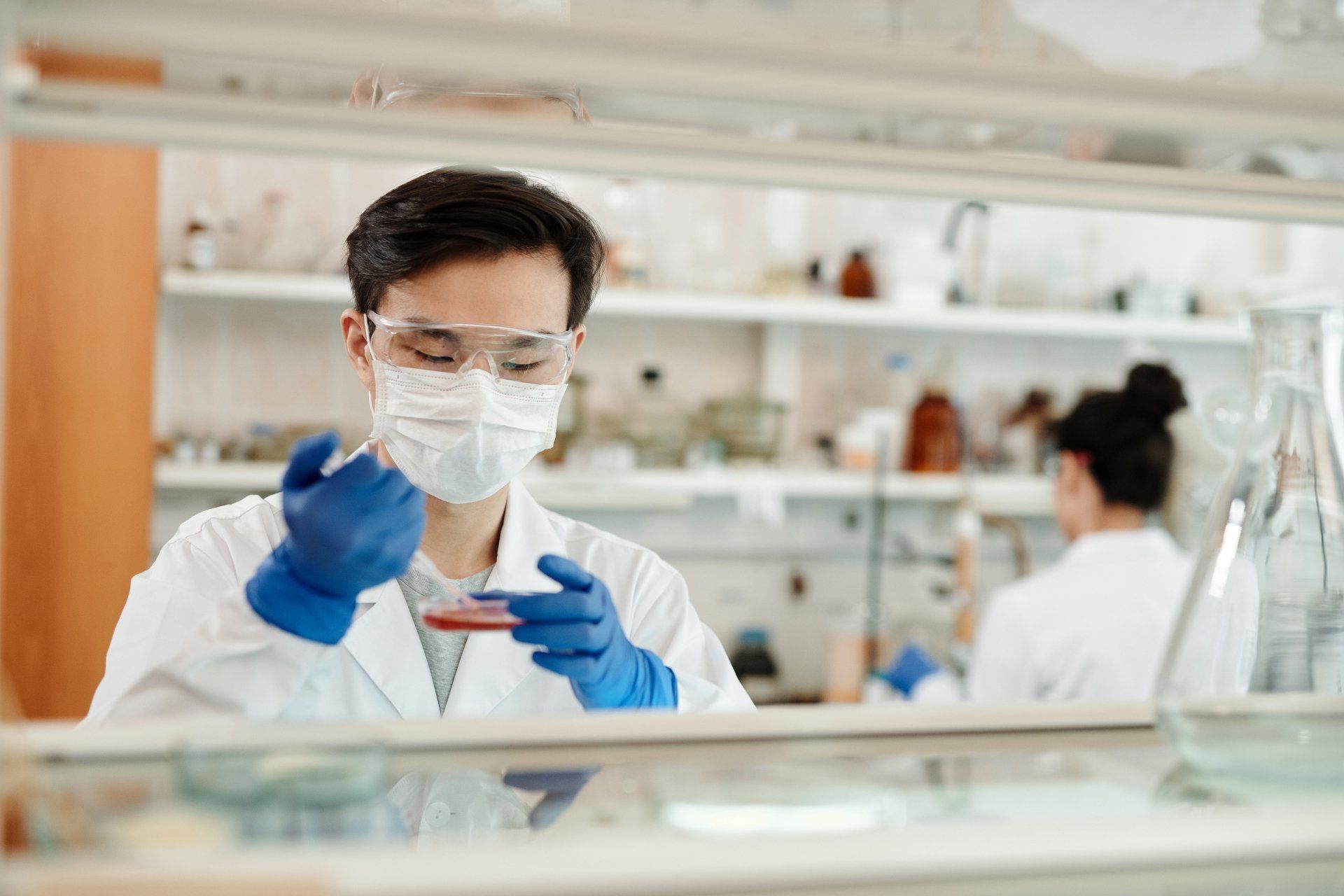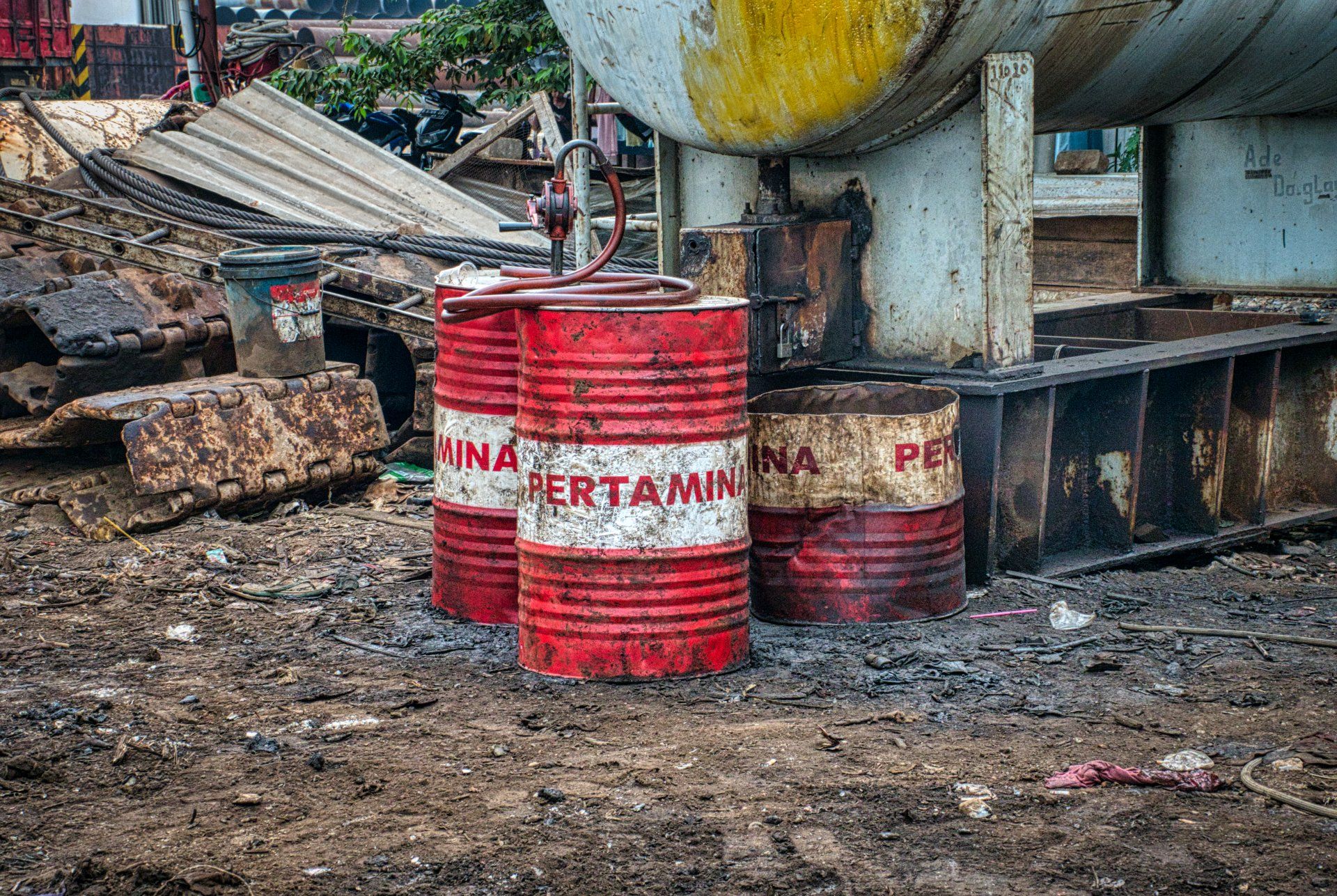OURSTORIES
Why Eco Friendly Cleaning?
Hello, my name is Pam Smith and recently got my carpets cleaned in Liverpool, initially I did try and clean my carpets on my own: well, THB it was me and my husband who tried our best to clean our carpets with a Rug Doctor, my main concern wasn't really that the Rug Doctor wasn't powerful enough to clean our carpets properly, what really bothered me was the smell of strong chemicals that emitted from our carpets after we cleaned them, a strong throat restricting smell of fake apples, I am sure it affected me afterwards, when I say affected me, I mean i got a really bad headache from the chemicals in the carpet cleaning solutions.
We own a small dog and after cleaning our carpets I noticed that my dog avoided the areas where we cleaned with the carpet shampoo: coincidence? I'm not so sure however It did push me to do more research on the detrimental affects of chemicals in the home.
Luckily i can across several comapanies in Merseyside who do provide a full eco friendly carpet cleaning Liverpool experiece, for example this company covered areas in the north like Maghull, Crosby and Ormskirk, and in South Liverpool, Woolton, Childwall and Mossley Hill
Eco Friendly Carpet Cleaning is the Healthy Option
Maintaining a clean and healthy living environment is essential for the well-being of both our families and our pets. One area of concern that often goes overlooked is the cleanliness of our carpets. Traditional carpet cleaning methods may use harsh and toxic chemicals that can be harmful to our health. Thankfully, there is a safer and more eco-friendly alternative - eco friendly carpet cleaning. Unlike traditional carpet cleaning methods, eco friendly carpet cleaning does not rely on toxic chemicals to achieve cleanliness. Instead, it utilizes safe and natural cleaning agents that are gentle on the environment and the health of your loved ones.
This is particularly important for individuals with allergies, asthma, or respiratory issues, as traditional carpet cleaning chemicals can exacerbate these conditions. One of the biggest advantages of eco friendly carpet cleaning is that it eliminates the use of throat-restricting chemicals. Traditional carpet cleaning often involves the spraying of toxic chemicals onto the carpet, which can release harmful fumes into the air we breathe. These chemicals can linger for days after the cleaning process, posing a threat to our respiratory system and overall well-being. Eco friendly carpet cleaning methods, on the other hand, rely on the power of steam. The steam cleaning process effectively removes dirt, bacteria, and allergens from your carpet without the need for harmful chemicals. Steam cleaning not only provides a thorough and deep clean, but it also helps kill mold and mildew, leaving your carpets fresh and sanitized. Another benefit of eco friendly carpet cleaning is its positive impact on the environment.
Traditional carpet cleaning chemicals are often flushed down the drain and eventually end up in our water systems, where they can contaminate natural habitats and harm aquatic life. Eco friendly carpet cleaning methods use biodegradable cleaning agents that do not pose a threat to our ecosystem. By choosing eco friendly carpet cleaning, you are making a conscious effort to reduce your carbon footprint and contribute to a healthier planet. Furthermore, eco friendly carpet cleaning helps extend the lifespan of your carpets. Traditional carpet cleaning methods can be harsh on carpet fibers, leading to premature wear and tear.
By opting for eco friendly cleaning, you are ensuring that your carpets are treated with care, increasing their longevity and saving you money in the long run. In conclusion, eco friendly carpet cleaning is the healthy option for your home and your loved ones.
By eliminating toxic chemicals and utilizing safe steam cleaning methods, you can maintain a clean and allergen-free living environment. Not only does eco friendly carpet cleaning benefit your health, but it also benefits the environment by reducing pollution and preserving natural resources. So, next time you need your carpets cleaned, consider choosing eco friendly carpet cleaning and enjoy the peace of mind that comes with a healthier and greener approach.
My Research Results
My research let me down many rabbit holes on the pros and cons of not using chemicals in the home, but what is really in these cleaning products?
1. 2-Butoxyethanol (2-BE)
What is 2-Butoxyethanol? A Hazardous Chemical Compound
2-Butoxyethanol (2-BE) is a solvent used in a variety of household and industrial products, such as paint strippers, cleaners, and degreasers. It is also a component of some adhesives, inks, and lubricants. Despite its widespread use, 2-BE is a hazardous chemical compound that can be toxic to humans and the environment.
Exposure to 2-BE can occur through inhalation, ingestion, or skin contact. Inhalation is the most common route of exposure, as 2-BE is easily evaporated at room temperature. Acute exposure to 2-BE can cause eye and respiratory irritation, as well as dizziness, headache, and nausea. Long-term exposure can damage the liver, kidneys, and blood.
2-BE is also a environmental pollutant that can damage plant life and aquatic animals. It is classified as a “hazardous air pollutant” by the US Environmental Protection Agency.
Therefore, it is important to be aware of the risks associated with 2-BE and take precautions to avoid exposure.
What is 2-Butoxyethanol?
2-Butoxyethanol (2-BE) is a solvent used in a variety of products, such as paint strippers, cleaners, and degreasers. It is also a component of some adhesives, inks, and lubricants. The chemical formula for 2-BE is CH3CH2OCH2CH2OCH2CH2OH. It is a colorless liquid with a sweet, ether-like odor and is soluble in water. It is toxic in low concentrations, and can enter the body through inhalation, ingestion, or contact with the skin.
What are the health effects associated with 2-Butoxyethanol exposure?
The health effects associated with exposure to 2-BE depend on the length, level and method of exposure. Acute exposure can cause eye and respiratory irritation, as well as dizziness, headache, and nausea. Chronic exposure can cause damage to the liver, kidneys, and blood. It can also disrupt hormone production and lead to reproductive and developmental issues. In some cases, 2-BE exposure has been linked to an increased risk of cancer.
How can you protect yourself from exposure to 2-Butoxyethanol?
To protect yourself from 2-BE exposure, it is important to take necessary safety precautions when using products that contain this chemical. Wear proper protective equipment, such as gloves, protective clothing and respirators, when handling 2-BE. It is also important to use proper ventilation when working with 2-BE, as it can easily evaporate at room temperature. Be sure to read product labels and wear a face mask if you think 2-BE is present.
What should you do if you have been exposed to 2-Butoxyethanol?
If you have been exposed to 2-BE, it is important to seek medical attention immediately. The extent of the exposure and symptoms will determine the best course of action. Depending on the situation, you may require an antidote, a decontamination procedure, or oxygen administration.
Where can I learn more about 2-Butoxyethanol?
To learn more about 2-BE, visit the Occupational Safety and Health Administration website for information on exposure levels, safety protocols, and regulations. For information about the effects of 2-BE on the environment, visit the US Environmental Protection Agency website. You can also consult with a medical professional or environmental chemist if you think you may have been exposed to 2-BE.
Potential Health Risks:
Health Canada has listed this chemical as a toxic substance under the Canadian Environmental Protection Act because it can harm our health. "Health Canada identified indoor air and skin contact with cleaning products as the main pathways of exposure. Regulations limit the concentration of 2-BE in most household cleaners to 5 or 6 percent, but higher concentrations are permitted in other products, notably and laundry stain removers (up to 22per cent)." This chemical breaks down more slowly in water and soil than it does in air. It can move out of contaminated soil and move into groundwater.
How to spot it :
Butyl Cellosolve; Ethylene Glycol, 2-BE
2. MEA (monoethanalomine), DEA (diethanolamine), TEA(triethanolamine)
What are MEA, DEA and TEA?
There is a class of chemicals known as “ethoxylated surfactants” which are commonly used in detergents, cleaners, and cosmetics. These chemicals are of particular concern because they are easily absorbed by the skin and then metabolized in the body to form carcinogenic compounds. One of the most common ethoxylated surfactants is monoethanolamine (MEA).
MEA is a clear, colorless liquid with a strong ammonia-like odor. It is often used as a pH adjuster, foaming agent, and emulsifier in a variety of household and personal care products. It can be found in laundry detergents, all-purpose cleaners, shampoos, carpet cleaners, and spot removers.
While MEA is considered to be a “safe” ingredient by the cosmetics industry, it has been linked to several health concerns. It is a skin and eye irritant, and can also cause liver and kidney damage. Studies have also shown that MEA is a central nervous system depressant.
In order to protect
What is MEA?
Monoethanolamine, also known as MEA, is a clear, colorless liquid with a strong ammonia-like odor. It is a type of ethoxylated surfactant, and is commonly used in household cleaners and cosmetic products. MEA is often used as a pH adjuster, emulsifier, and foaming agent. It is also a common ingredient in laundry detergents, shampoos, carpet cleaners, spot removers, and all-purpose cleaners. MEA is considered to be quite safe when used in products with appropriate dilution. It is not a skin irritant, and studies have shown that it is non-carcinogenic when used at low concentrations. However, MEA has been associated with some health risks. It can be a mild skin irritant and can cause eye irritation. It may also be a central nervous system depressant, and may cause liver and kidney damage in high concentrations.
What is DEA?
Diethanolamine (DEA) is another type of ethoxylated surfactant that is often used in household and personal care products. It is a clear, colorless liquid with a faint ammonia-like odor. DEA is used as a pH adjuster, emulsifier, and foaming agent in several products. It may be found in shampoo, shaving cream, lotion, hair care products, sunscreen, bubble bath, and face cleaners. DEA is considered to be generally safe when used in properly diluted products, however, it is considered to be a potential carcinogen and should be used with caution. The substance is believed to be a skin and eye irritant and may cause liver and kidney damage in high concentrations. Studies have also found that long-term exposure to DEA may be associated with an increased risk of cancer.
What are the applications of MEA and DEA?
MEA and DEA are both commonly used as foaming agents, emulsifiers, and pH adjusters in household and personal care products. MEA is often found in laundry detergents, spot removers, shampoos, carpet cleaners, and all-purpose cleaners. DEA is often found in products such as shampoo, lotion, and sunscreen. Both chemicals are also used in industrial applications such as leather finishing, textile cures, cleaning compounds, oil emulsions, and corrosion inhibitors. They have also been used as solvents in printing inks, adhesives, and rubber latex coatings.
Are there any safety concerns associated with MEA and DEA?
MEA and DEA are both considered to be generally safe when used in products with the appropriate dilution. That said, both MEA and DEA have been linked to several health concerns. MEA is thought to be a central nervous system depressant and can cause skin and eye irritation. DEA is a suspected carcinogen and may cause liver and kidney damage in higher concentrations. It is also important to note that long-term exposure to both MEA and DEA may carry certain health risks. There is some research to suggest that participants exposed to either chemical had an increased risk of developing certain types of cancer and other serious health conditions. To Wrap Things Up Monoethanolamine (MEA) and diethanolamine (DEA) are both ethoxylated surfactants commonly used in household and personal care products. MEA is a clear, colorless liquid with a strong ammonia-like odor, and is often used as a pH adjuster, foaming agent, and emulsifier in a variety of detergents, cleaners, and cosmetics. DEA is a clear, colorless liquid with a faint ammonia-like odor, and is often used in shampoo, shaving cream, and lotions. Both MEA and DEA are considered to be “safe” when used in appropriately diluted products. However, they have both been linked to several health concerns, including skin irritation, eye irritation, and possible carcinogenicity. It is important to exercise caution when using either chemical, and to limit long-term exposure.
What cleaning products contain MEA, DEA, and TEA?
Soap, laundry detergents, oven cleaners, glass cleaners, surface cleaners, and floor cleaners.
Potential Health Risks:
Ethoxylated can also be contaminated with 1,4-dioxine, linked to human carcinogen. MEA is known to induce asthma in workplace . DEA is a mild skin and eye irritant. Some studies have shown a direct link between tumors and this toxic carcinogen
How to spot it :
MEA (monoethanolamine), DEA (diethanolamine), TEA(triethanolamine)
Cleaning Chemicals Continued
3. Nonylphenol ethoxylates (NPEs)
What is Nonylphenol ethoxylated?
Nonylphenol ethoxylates (NPEs) are a class of toxic chemicals that are used in a variety of industrial and commercial products. NPEs have been linked to a variety of health problems, including cancer, developmental and reproductive toxicity, endocrine disruption, and immunotoxicity.
NPEs are persistent in the environment and can bioaccumulate in animals and humans. They are also toxic to aquatic life. NPEs have been found in a variety of water bodies, including rivers, lakes, and oceans.
NPEs have been banned or restricted in a number of countries due to their harmful effects on human health and the environment. However, they are still used in many products sold in the United States.
If you are concerned about the health effects of NPEs, avoid products that contain them. You can also voice your concerns to companies that use NPEs in their products.
What are Nonylphenol ethoxylates (NPEs)?
Nonylphenol ethoxylates (NPEs) are a class of surfactants, which are compounds that lower the surface tension between liquids and solids and between liquids and gases. NPEs are also known as alkylphenol ethoxylates (APEs). NPEs are composed of a combination of alcohols, phenols, and ethylene oxide. NPEs are widely used in a variety of industrial and commercial products. They are found in detergents, surface cleaners, degreasers, and other household cleaning products. NPEs are used in surfactants, shampoos and conditioners, paint and varnish removers, cement mortar, and the production of paper and plastic. In addition, they are used in agricultural and industrial processes and in the manufacture of plastics, textiles, and rubber products.
Why are NPEs used in products?
NPEs are used in a variety of products because of their ability to reduce surface tension between liquids and solids, as well as between liquids and gases. This makes them useful in a variety of cleaning and manufacturing processes. They are also useful in emulsifying oil and grease in water, and they have the ability to act as wetting agents. NPEs are also cheap and easy to produce, making them an attractive choice for manufacturers. Unfortunately, this means that they are often used in place of more expensive and potentially more effective alternatives.
What are the health and environmental concerns with NPEs?
NPEs are considered to be toxic to humans and the environment. NPEs can be absorbed through the skin and can also be inhaled through vapors or aerosols. Human exposure to NPEs has been linked to a variety of health effects, including cancer, developmental and reproductive toxicity, endocrine disruption, and immunotoxicity. NPEs are also persistent in the environment, meaning that they remain in the environment for long periods of time. They are also toxic to aquatic organisms, and they have been found in a wide range of water bodies, including rivers, lakes, and oceans. NPEs can also bioaccumulate in animals and humans, meaning that the amount of NPEs can increase over time in these organisms.
How can I avoid products with NPEs?
You can avoid products containing NPEs by being an informed consumer. Look for products that are labeled as “NPE-free” or “green.” Avoid products that do not list all ingredients on their labels. You can also contact companies directly and ask if they use NPEs in their products. Some companies will have “eco-friendly” or “natural” product lines that are free of NPEs.
In conclusion
Nonyphenol ethoxylates (NPEs) are a class of toxic chemicals that are used in a variety of industrial and commercial products. NPEs have been linked to a variety of health problems, including cancer, developmental and reproductive toxicity, endocrine disruption, and immunotoxicity. NPEs are also persistent in the environment and can bioaccumulate in animals and humans. To avoid products containing NPEs, look for products that are labeled “NPE-free” or “green.” You can also contact companies directly and ask if they use NPEs in their products. By being informed by the consumer, you can help protect both your health and the environment.
What cleaning products contain Nonylphenol ethoxylate (NPEs)?
Carpet stain removers, car wash products, all-purpose cleaners, toilet cleaners, laundry detergents, floor degreasers, and air fresheners.
Potential health risks:
Several impartial studies have shown a link between breast cancer and these toxins. They have also been found to harm reproduction in fish and other sea creatures. They are also known as endocrine disruptors.
How to spot it :
Nonylphenol (NP) and nonylphenol ethoxylates (NPEs)
4. Fragrance/Parfumes
What are fragrance chemicals?
Most people are unaware of the dangers of fragrance chemicals. These chemicals are found in many everyday products, such as perfumes, air fresheners, and laundry detergents. They are also used in a variety of other products, such as cosmetics, soap, shampoo, and cleaning products.
While most people think of fragrances as being harmless, the truth is that they can be very toxic. Many fragrance chemicals have been linked to a variety of health problems, such as allergies, migraines, and even cancer.
The good news is that there are a number of ways to avoid these dangerous chemicals. This article provides information on the dangers of fragrance chemicals and how to avoid them.
Fragrance chemicals are ubiquitous in many of the products we use every day, but many of us are unaware of the dangers they pose. These chemicals are found in perfumes, air fresheners, laundry detergents and many other products. They have been linked to a number of health risks, such as allergies, migraines, asthma, and even cancer. Not all fragrance chemicals are created equal, however. Some have been deemed safe for use, while others are more potentially hazardous. The most dangerous chemicals are those that can damage the environment, such as phthalates, which can be extremely hazardous to aquatic life. In addition, some fragrance chemicals are hormone disruptors, meaning they can interfere with the body’s natural production of hormones, leading to various health problems.
What You Can Do to Protect Yourself If you’re concerned about the dangers of fragrance chemicals, there are several things you can do to protect yourself. The first is to avoid products that contain these chemicals, such as perfumes, air fresheners, and laundry detergents. Many companies now offer hypoallergenic products that do not contain fragrance chemicals. In addition, you can read product labels carefully.
Many products contain fragrance chemicals, even if they are not advertised as such. Look for words such as “parfum,” “fragrance,” or “floral scent,” as these are indications that the product contains fragrance chemicals. The Role of Government Regulation The government has taken steps to regulate the use of fragrance chemicals. In the United States, the Food and Drug Administration requires all products that contain fragrance chemicals to list the ingredients on the label. This allows consumers to make informed choices when selecting products. In addition, the European Union has enforced regulations that restrict the use of certain hazardous chemicals, including some fragrance chemicals. This has led to an overall reduction in the use of these chemicals.
The Importance of Using Natural Products Finally, it is important to be mindful when selecting products. Whenever possible, opt for natural products that do not contain fragrance chemicals. Natural products are often more gentle on the skin and hair, and they often include beneficial ingredients that can improve your overall health. For example, natural oils and extracts such as coconut oil, olive oil, and jojoba oil are often used in beauty and skin care products. They can help keep the skin hydrated and boost its overall health.
To Wrap Things Up In conclusion, fragrance chemicals are found in many products and can have a number of negative health effects. It is important to be aware of the dangers of fragrance chemicals and take steps to avoid them. Read labels carefully and opt for natural products whenever possible. Finally, be aware of the government regulations in place to protect consumers from hazardous fragrance chemicals.
What cleaning products contain fragrance or parfume?
Pretty much any conventional cleaning or beauty product that has a scent. Laundry detergents, fabric softeners, and deodorizer. Air fresheners contain a potpourri of fragrance chemicals, carpet cleaning chemicals. in some cases including cancer-causing benzene and formaldehyde, as well as phthalates and numerous VOCs.
Potential health risks:
Phthalates are typically present in all synthetic perfumed products. Phalates have been highlighted a lot in many media companies leading to them being removed in a lot of the cases. Harmful chemicals being removed IS EXCELLENT NEWS FOR THE ENVIROMENT. floor polishing products contain dibutyl phthalate (DBP). The European Union classifies DBP as very toxic to sea organisms.
How to spot it :
Perfume/Fragrance. Phthalate, DEP, DEHP, and DBP.
Eco Friendly Cleaning: Benefits You Didn't Know
Eco-friendly cleaning is a term used to describe cleaning products and methods that are designed to have a minimal impact on the environment. Eco-friendly cleaning products are made from natural ingredients and are biodegradable. They are also non-toxic and free from harmful chemicals.
Eco-friendly cleaning products have many benefits over traditional cleaning products. They are better for your health, and they are also better for the environment. In this article, we will discuss the benefits of eco-friendly cleaning and why you should make the switch to eco-friendly cleaning products.
Eco-friendly Carpet Cleaning Franchises Merseyside
Eco-friendly franchise cleaning is the practice of using cleaning products and methods that are designed to reduce environmental impacts while providing the same level of cleaning performance. Eco-friendly cleaners are made from natural ingredients, biodegrade quickly, and don’t contain harsh chemicals. In addition to not releasing harmful toxins, they are also less likely to cause skin or respiratory problems. Eco-friendly cleaners can often be found in local stores and online and if you're in St Helens then these guys were very reasonable priced. They often have labels that indicate that they are natural, biodegradable, and non-toxic. In addition, eco-friendly cleaning products are usually marked with the Environmental Protection Agency’s (EPA) Design for the Environment label. This label lists the ingredients that meet the EPA’s criteria for safe and effective cleaning products. Here is a list of both eco friendly carpet cleaning franchises in Liverpool carpet cleaning franchise in Liverpool, they have a company called Eco carpet cleaners in Liverpool and over the water on the Wirral is also this carpet cleaning franchise on the Wirral they have a company called The wirral carpet cleaner
The benefits of eco-friendly cleaning
Choosing an eco-friendly cleaning products comes with many benefits. The biggest benefit is that eco-friendly products are better for the environment. Eco-friendly cleaning products are designed to reduce or eliminate the release of pollutants into the environment. By choosing eco-friendly cleaning products, you’re helping to protect the air, land, and water from unnecessary contamination. Another benefit of using eco-friendly cleaning products is that they are better for your health. Since eco-friendly cleaning products are made with natural ingredients, they are generally safer to use. This is especially beneficial for people with asthma or allergies, who may be more sensitive to harsh chemicals. Additionally, eco-friendly cleaning products are often free of artificial fragrances, which can cause headaches and other health issues.
How to find eco-friendly cleaning products
Finding eco-friendly cleaning products is easier than ever. Many stores now have sections dedicated to eco-friendly cleaning products, but it can also be easy to find them online. When looking for eco-friendly cleaning products, you should look for products that are made from natural ingredients, are biodegradable, and are free from harmful chemicals. You should also look for products that have the Design for the Environment label, which indicates that the product meets the EPA’s criteria for safe and effective cleaning products. Another way to find eco-friendly cleaning products is to check the labels on products. Many traditional cleaning products may have some natural ingredients and may be free from harsh chemicals, but they may not be as effective as eco-friendly cleaning products. You can also check to see if the product is certified by Green Seal, an organization that evaluates and certifies eco-friendly products.
The importance of eco-friendly cleaning
Eco-friendly cleaning is important both for your health and for the health of the environment. Choosing eco-friendly cleaning products is an easy way to help reduce the amount of toxins released into the environment. In addition, using eco-friendly cleaning products can help to reduce air pollution. Traditional cleaning products can release volatile organic compounds (VOCs), which can contribute to air pollution. By choosing eco-friendly products, you can help to reduce the amount of VOCs released into the air. Eco-friendly cleaning products can also help to conserve water. Many traditional cleaning products are made with ingredients that make it difficult for water to be re-used. By switching to eco-friendly cleaning, you can help to reduce water waste.
OUR#PHOTOS
WEARE HERE
BYME PAM SMITH

Hopefully you have enjoyed a little bed time reading by me Pam Smith. Knowing the importance of chemicals in the home or in the workplace is extremely important for everyone. I just wish more people would highlight and inform us the consumer of the dangers of cleaning products. If you can get hold of eco-friendly cleaning products then I'd encourage you to do so, if you can afford it.. of course. Since doing this research I have been messaged by DOZENS of people thanking me for the information above, I CAN TELL YOU THAT IT IS MY ABSOULE PLEASURE....If you would like to read my other blog floor and carpet cleaning in Liverpool.
By knowing just a little more today than you knew yesterday is so important in keeping and sustaining this environment.
Other carpet cleaners nearby that are 100% eco-friendly
Try and do your bit for the environment & thank you for your time reading this blog.
Pam Smith.





